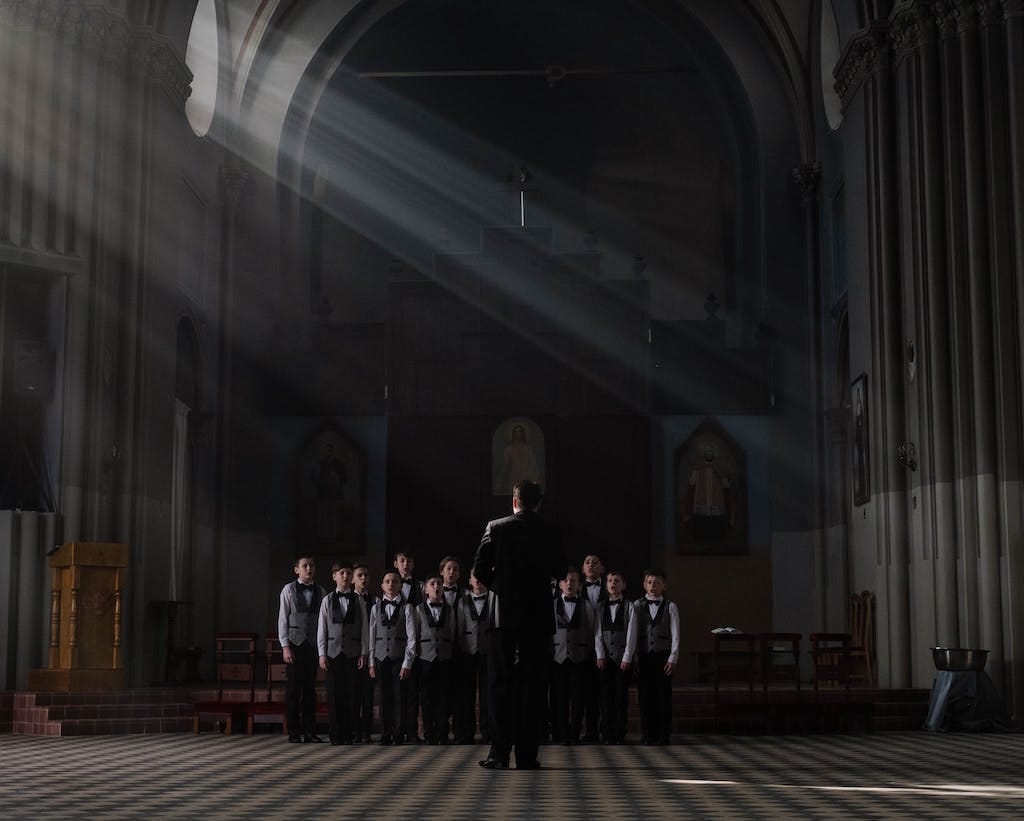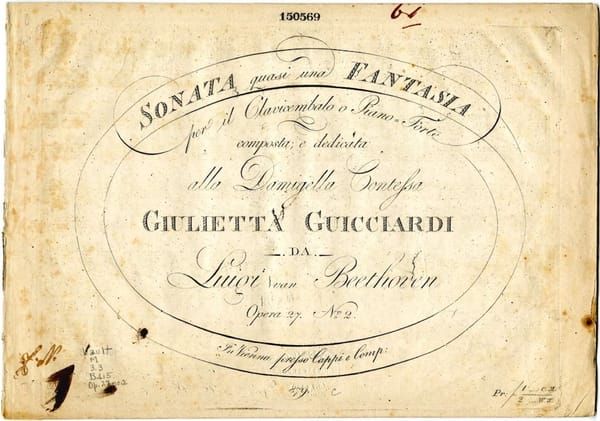Cherished Carols to Timeless Oratorios: Christmas in Classical Music

Christmas, as a theme in classical music, finds its origins intertwined with the earliest manifestations of musical expression. Gregorian chants, with their ethereal cadence, served as the foundational blocks for the sonic representation of the Nativity. These chants, echoing through the stone arches of ancient churches, bore witness to the devoutness surrounding the birth of Christ.
Early Christmas Music
It was during the Baroque period that the essence of Christmas found grandeur in the hands of composers like Johann Sebastian Bach, George Frederic Handel, and Antonio Vivaldi. Bach’s “Christmas Oratorio” remains an enduring masterpiece, a musical journey chronicling the Nativity story in a series of six cantatas, each resonating with the jubilant spirit of the season. Handel’s “Messiah,” though a fixture of Easter performances, encompasses the entirety of Christ’s life, with its jubilant “Hallelujah” chorus often performed during the Christmas season, celebrating the birth of the Savior.
The Renaissance era ushered in an era of artistic innovation and a rekindled interest in ancient traditions. Composers like Michael Praetorius brought forth enchanting Christmas tunes, like “Es ist ein Ros entsprungen” (“Lo, How a Rose E’er Blooming”), embracing the vibrant spirit of the season through polyphonic marvels.
Beyond the grandeur of courts and cathedrals, the heartwarming simplicity of Christmas found expression through folkloric carols. These humble melodies, passed down through generations, encapsulated the communal joy and religious fervour, often adapted and harmonized by renowned composers into their larger works.
Iconic Christmas Oratorios and Cantatas
The heart of Christmas in Western classical music beats within the realms of oratorios and cantatas. These monumental compositions, akin to musical dramas, enrapture audiences with their vivid storytelling and soul-stirring melodies, encapsulating the essence of the Nativity.
Handel’s “Messiah”
While Handel’s “Messiah” often finds its spotlight during Easter, its significance during Christmas cannot be understated. This magnum opus, composed in a mere 24 days, encompasses the entire story of Christ’s life, from birth to resurrection. The jubilant “For unto Us a Child Is Born” and the resounding “Glory to God in the Highest” resonate with the festive spirit, marking it as a cornerstone of Christmas musical traditions.
Bach’s “Christmas Oratorio”
Bach’s genius culminates in the “Christmas Oratorio,” a harmonious saga retelling the Nativity story through a sequence of six cantatas. From the jubilation of the birth announcement to the adoration of the shepherds and magi, each cantata paints a vibrant picture of the joyous event. The exuberance of “Jauchzet, frohlocket” (“Rejoice, Exult”) and the serene beauty of “Herrscher des Himmels” (“Ruler of Heaven”) resound through concert halls, infusing the air with the mirth of Christmas.
Vivaldi’s “Gloria”
While not explicitly centered on Christmas, Vivaldi’s “Gloria” encapsulates the radiance and exaltation of the Nativity. Its ethereal arias and exuberant choruses, especially “Gloria in excelsis Deo,” evoke a sense of celestial jubilation, making it a perennial favourite during the festive season.
Charpentier’s Festive Offerings
Marc-Antoine Charpentier, a contemporary of Bach, crafted charming Christmas pastorales and midnight masses, infusing them with a pastoral charm that resonated with the simplicity of the Nativity. His compositions, like “Messe de Minuit pour Noël” (“Midnight Mass for Christmas”), transport listeners to rustic settings, evoking the serene ambiance of the holy night.
Evolution of Christmas Carols
The charming simplicity and heartfelt melodies of traditional Christmas carols have been a source of inspiration for classical composers across centuries. These cherished tunes, rooted in folk traditions and communal celebrations, found their way into the grandeur of classical compositions, adorned with intricate harmonies and symphonic brilliance.
Tchaikovsky’s “The Nutcracker”
Though primarily known as a ballet, Tchaikovsky’s “The Nutcracker” is a treasure trove of Christmas melodies. From the enchanting “Dance of the Sugar Plum Fairy” to the jubilant “Waltz of the Flowers,” Tchaikovsky captured the magic of the holiday season, intertwining traditional themes within a fairy-tale narrative.
Holst’s “Christmas Day”
Gustav Holst’s “Christmas Day” suite is a splendid homage to traditional carols. Each movement, from the lively “Good Christian Men, Rejoice” to the serene “In the Bleak Midwinter,” pays tribute to the enduring charm of these melodies, beautifully orchestrated to evoke the spirit of Christmas.
Respighi’s “Laud to the Nativity”
Respighi’s choral work, “Laud to the Nativity,” weaves together Renaissance carols in a tapestry of ethereal beauty. The composition, exuding a reverent aura, transports listeners to a bygone era, enveloping them in the timeless allure of Christmas melodies.
Vaughan Williams’ “Fantasia on Christmas Carols”
Ralph Vaughan Williams’ “Fantasia on Christmas Carols” showcases the seamless integration of traditional carols into a symphonic landscape. With its rich choral textures and orchestral grandeur, this piece exemplifies the fusion of folk melodies with classical sophistication.
Berlioz’s “The Shepherds’ Farewell”
Hector Berlioz, in “The Shepherds’ Farewell” from his “L’Enfance du Christ,” tenderly portrays the shepherds bidding farewell to the infant Jesus. This gentle, pastoral piece draws upon the essence of simplicity, echoing the tenderness and reverence of the Nativity scene.
Contemporary Influence of Christmas
While rooted in tradition, the influence of Christmas continues to resonate profoundly in the works of contemporary composers. Their compositions echo the evolving facets of the holiday season, blending classical nuances with innovative expressions of festivity.
John Rutter’s Choral Elegance
Renowned for his choral compositions, John Rutter’s “Gloria” captures the jubilant essence of Christmas in a contemporary setting. The exuberant brass fanfares and lush choral arrangements evoke a sense of celebration, offering a modern interpretation of the Nativity’s joyous proclamation.
Morten Lauridsen’s Reverence
Lauridsen’s “O Magnum Mysterium” stands as a testament to the sublime beauty and reverence of Christmas. Its transcendent harmonies and ethereal melodies reflect a contemplative yet enchanting portrayal of the Nativity, drawing listeners into a luminous realm of spiritual contemplation.
Eric Whitacre’s Elegy
Whitacre’s “Lux Aurumque,” although not explicitly a Christmas composition, captures the celestial essence often associated with the holiday season. Its shimmering harmonies and celestial imagery evoke a sense of divine radiance, resonating with themes of hope and light—integral elements of the Christmas spirit.
Contemporary Orchestral Celebrations
In the realm of contemporary orchestral compositions, works like Jennifer Higdon’s “O Magnum Mysterium” or Thomas Adès’ “A Christmas Carol” encapsulate the festive fervour through diverse musical expressions. These compositions, though distinct in style and approach, converge in commemorating the enchantment and joy of Christmas.Synthesis of
Tradition and Innovation
These contemporary compositions stand as a testament to the enduring allure of Christmas in classical music. While rooted in tradition, they bridge the gap between the timeless essence of the Nativity story and the innovative expressions of modernity, reaffirming the holiday’s significance in the ever-evolving landscape of classical composition.





